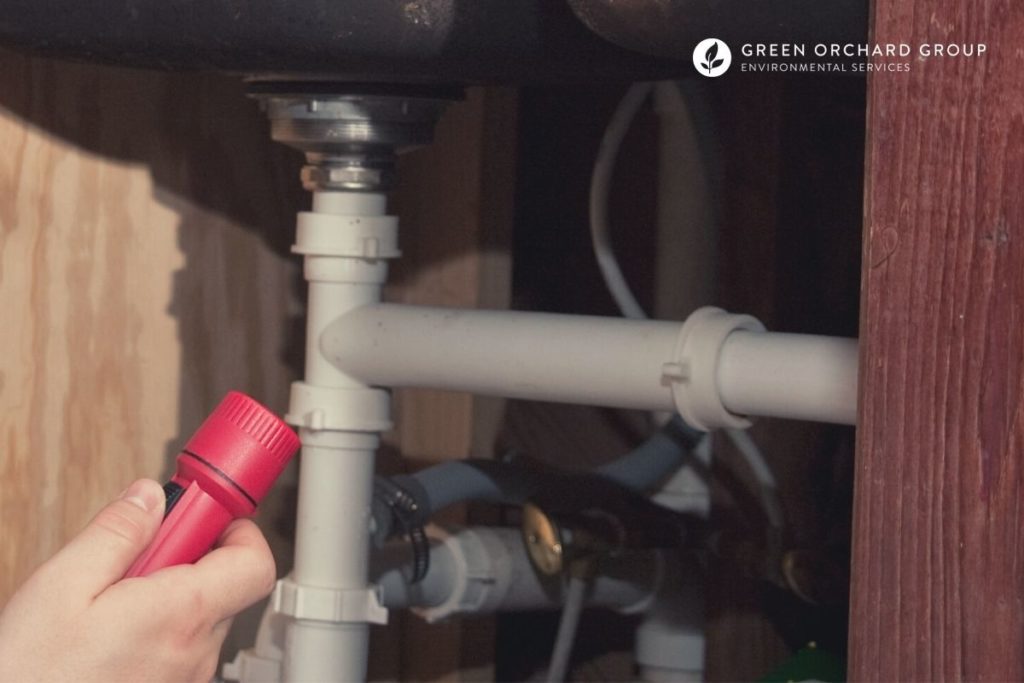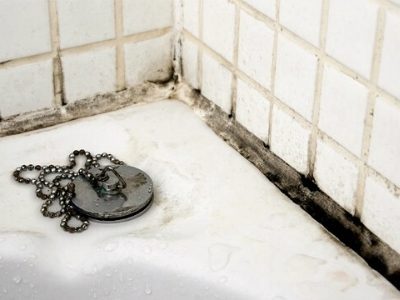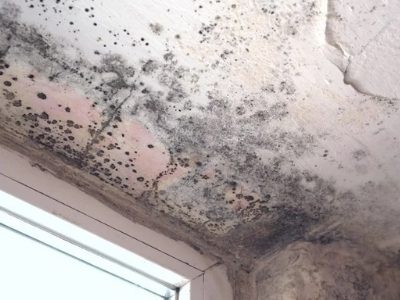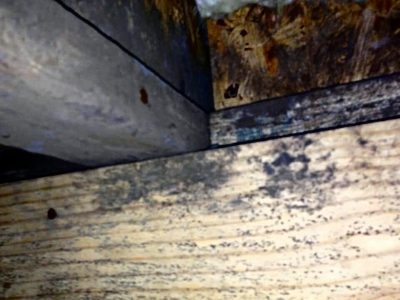
Article Sections:
Mold is the most common source of indoor air quality problems in houses and apartments.
With the average American spending 90% of their time indoors, according to the EPA, the presence of mold is something everyone should be concerned about.
Over time, exposure to mold spores can produce the following signs and symptoms:
- Musty, earthy odors
- Asthma or allergy symptoms while indoors
- Difficulty breathing
- Coughing
- Nasal and sinus congestion
- Headaches
- Throat irritation
- Eye irritation
- Skin rashes
How to Check for Mold
To check for mold, look for discoloration on surfaces with a slimy, fuzzy, or powdery texture.
Mold can sometimes grow in hard-to-spot places, such as behind wallpaper, inside vents, or in an attic or basement.
Start by inspecting your house or apartment for leaky pipes or any other signs or sources of moisture. Mold always needs moisture to grow, so look in areas and surfaces that have been recently exposed to water, humidity, or condensation.
When you check for mold, you’ll want to answer these 3 questions:
- Do you have mold?
- What caused it?
- Where is it located?
With answers the questions above, you’ll have a much higher chance of successfully getting rid of the mold and keeping your house or apartment mold-free in the future.
If you discover mold growing in your home, it’s important to take steps promptly to find and remove it.
Exposure to mold can make you and your family sick, and cause costly damage to walls, furniture, and other building structures. Although mold is not as urgent as a fire or water leak, leaving it alone will give it time to grow and spread.



If You Suspect Mold in Your House or Apartment…
Here is a list of common places to check for signs of mold:
- Discolored areas on walls, ceilings, and moldings
- Ventilation ducts and plumbing lines
- Behind moist or peeling wallpaper
- Carpeting and fabrics with recent water exposure
- Around leaky windows, window frames, and the wallboard around windows
- Bathrooms — sinks, shower curtains, bathroom tiles, and tubs
- Kitchens — sinks, cabinetry, kitchen appliances (e.g. refrigerators and dishwashers)
- Attics and Basements — walls, floors, ceilings, laundry machines, cardboard boxes, stacks of papers
- Bedrooms — mattress, vents, radiators, windows, closets
As long as you find any mold growth, it should be cleaned and removed. It’s also important to determine and repair the underlying condition(s) that caused the mold to grow in the first place.
In many cases, sampling or testing the mold to determine the species is unnecessary (according to the EPA).
Although some molds may be more dangerous than others, every type of indoor mold can exacerbate allergies, asthma, and cause other respiratory problems.
Nevertheless, familiarizing yourself with the signs and appearance of potentially toxic types (e.g. “toxic black mold“) is still a good idea. Mold testing or sampling is only used in cases when you want to rule out other water damage problems, such as mildew, that might resemble mold.

If You Recently Had Leaking, Flooding, or Moisture Issues…
If you’ve recently experienced a emergency leak or flood, you have good reason to suspect mold — especially if it was not thoroughly dried and cleaned within 24 to 48 hours.
In this scenario, the recent water damage or moisture issue is the most likely cause of mold growth. Therefore, focus your inspection around the affected surfaces and areas.
- Identify areas and items that were exposed to water or moisture
- Carefully check for signs of visible mold growth
- Look behind and underneath surfaces such as carpets, wallpaper, cabinets, and walls
- Confirm that water and moisture have been completely removed and the source of problem has been repaired
Whenever you find visible mold growth, do a thorough check around and behind the affected surfaces to determine the entire scope and severity of the problem.
Lastly, take note of the type of surfaces affected. Nonporous materials like tile, glass, hard plastics, and metals can be scrubbed clean with household cleaning products, water and soap, or diluted bleach solutions. Porous materials like wood, drywall, and upholstery are more difficult to remove mold from, and sometimes may need to be replaced.
If the entirety of the mold growth does not exceed 10 square feet, you can generally handle the cleanup and removal yourself.
But if the mold covers more than 10 square feet, you are required to use a licensed mold professional to do the work, according the New York State Department of Labor.

Professional Mold Inspection & Remediation Services in NYC
Green Orchard Group is a leading environmental health & safety firm in New York City specializing in mold assessment and remediation services.
We are licensed mold professionals with over 25 years of experience providing accurate, reliable, and affordable mold services.
Whether you need help with an existing mold issue or need help identifying something growing in your home that looks like mold, email or call us — we’re here to help!
